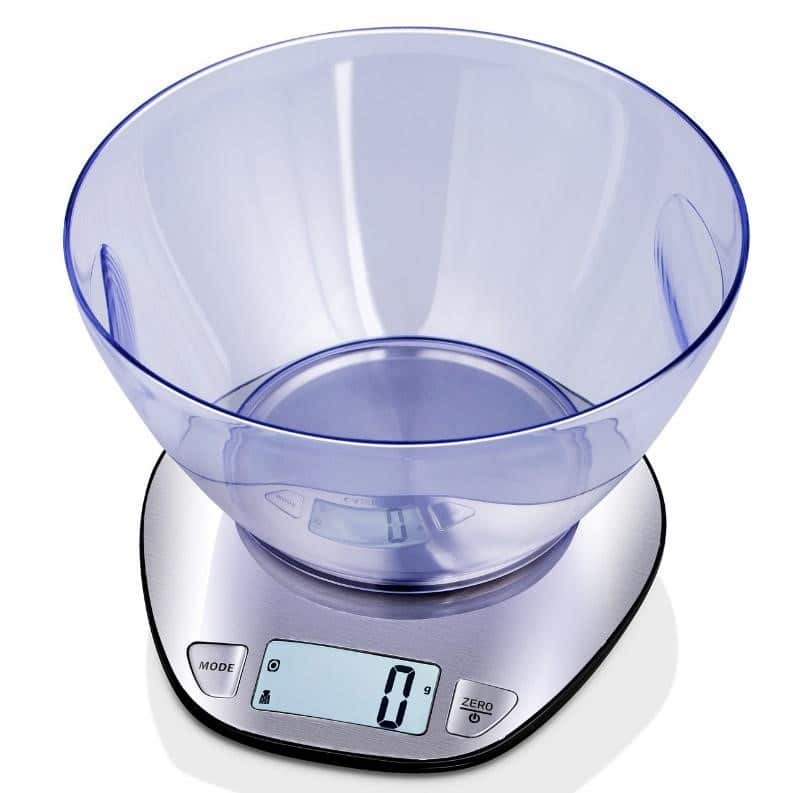Table of Contents
Portion control is essential for achieving and maintaining a healthy lifestyle when trying to lose weight. Understanding serving sizes is a crucial but frequently ignored component of portion management.
People may choose their food consumption wisely if they understand the idea of serving sizes and how they fit into a balanced diet.
This page tries to debunk the myths surrounding serving sizes, offer useful resources for portion control, and present methods for calculating and customizing serving sizes for different meals.
Portion Control: What Is It?
Portion management is the process of controlling how much food is eaten in order to maintain a balanced and healthy diet. It entails paying attention to the amount of food offered and consumed to make sure that it adheres to suggested serving sizes.
Controlling portions is essential for managing weight and can support weight loss efforts. People can limit their calorie intake and prevent overeating by managing portion sizes.
It improves satiety, encourages a healthier connection with food, and permits the enjoyment of a range of foods while upholding nutritional balance. In the end, portion control gives people the power to make deliberate decisions about their eating patterns and general well-being.
Understanding Serving Size

The term “serving size” refers to the amount of a particular food or drink that is regarded to be a typical serving for consumption. It acts as a resource for comprehending nutritional data and controlling calorie consumption.
Common consumption patterns, dietary recommendations, and nutritional criteria are frequently used to estimate serving sizes. They aid people in comprehending the proper proportions of various food groups required for a balanced diet.
Understanding serving sizes enables people to monitor their portion sizes, modify their meal plans, and make sure they are getting the nutrition they need while successfully managing their weight. You can find many meal plans in the Beyond Body book. You can find the Beyond Body Review here.
Why Is Portion Control Important for Weight Loss?
Several factors make portion management essential for weight loss, including the following:
1. Calorie Control
You may manage your calorie consumption by controlling portion sizes. Larger servings can cause overeating because it’s simpler to consume more calories than you need each day. You can maintain a calorie range that encourages weight loss by exercising portion control. For additional support in achieving your weight loss goals, treatments like tirzepatide l-carnitine injections can help boost metabolism, suppress hunger, and enhance fat-burning when paired with healthy habits.
However, it’s important you do your research and talk to a professional. Make sure to ask how does tirzepatide l-carnitine work? Is this the right option for you? and how might it affect your body? Taking the time to research and ask the right questions can help you feel confident and prepared as you move forward with your weight loss journey.
2. Mindful Eating
Paying attention to portion sizes promotes mindful eating. It encourages you to savor each bite, be aware of hunger and fullness cues, and avoid mindless overeating. By being mindful, you develop a healthier relationship with food and reduce the chances of consuming excess calories.
3. Balanced Nutrition
Portion control facilitates a balanced diet by allocating appropriate portions of different food groups. It ensures that you consume adequate amounts of essential nutrients while controlling calorie intake. A well-balanced diet supports weight loss by providing the necessary nutrients for overall health and sustainable weight management.
4. Flexibility and Variety
Portion control allows for flexibility and variety in your diet. Instead of completely restricting certain foods, you can enjoy them in moderation by managing portion sizes. Further, This flexibility makes it easier to adhere to a weight loss plan and reduces the feelings of deprivation that often lead to overindulgence. You can also save yourself from the hassle and instead look for where to get a weight-loss injection.
Tools for Portion Control
Here are some key tools that can aid in portion control:
1. Measuring Cups And Spoons
Measuring cups and spoons provide standardized measurements for portioning ingredients. They ensure consistency and accuracy in portion sizes, especially for items like grains, liquids, and condiments.
2. Kitchen scales

Kitchen scales are invaluable for measuring the weight of solid foods. They allow for precise portion control, particularly when it comes to proteins, fruits, vegetables, and other items that may have varying densities.
3. Visual Cues And Hand Measurements
Visual cues and hand measurements serve as handy portion estimation techniques. For example, a serving of meat can be visualized as the size of a deck of cards, while a serving of grains can be roughly equivalent to a clenched fist.
4. Mobile Apps And Online Resources For Tracking Portion Sizes
Numerous mobile apps and online resources offer databases and tools to track and monitor portion sizes. Moreover, These resources often provide detailed nutritional information, recommended serving sizes, and the ability to log and track meals.
Tips for Practicing Portion Control and Using Serving Sizes to Promote Weight Loss
Practicing portion control and using serving sizes effectively are key strategies for promoting weight loss. Here are a few tips to help you incorporate these practices into your daily routine:
1. Read Food Labels
Pay attention to serving sizes listed on food labels. Compare them to the amount you typically consume to ensure you’re aware of the actual portions you’re eating.
2. Use Measuring Tools
Invest in measuring cups, spoons, and a kitchen scale to precisely measure your portions. Additionally, This will help you avoid guesswork and ensure you’re sticking to recommended serving sizes.
3. Portion Meals Before Eating
Rather than eating directly from a shared container or serving dish, portion out your meal onto a plate or into containers. Additionally, This helps you visualize the appropriate serving size and prevents overeating.
4. Follow Mindful Eating
Slow down and savor every bite. Be aware of your body’s hunger and fullness signs. Quit eating when you feel comfortably satiated, even if there is food left on your plate.
5. Be Cautious With Liquid Calories
Be mindful of portion sizes when consuming beverages that contain calories, such as juices, sodas, and alcoholic beverages. These can add up quickly, so consider measuring or using smaller glasses.
6. Practice Portion Control When Eating Out
Be aware that restaurant portions are often larger than necessary. Further, Consider sharing a meal with a friend or requesting a smaller portion. Moreover, Ask for sauces and dressings on the side to control the amount you consume.
Conclusion
In Conclusion, Mastering portion control and understanding serving sizes are essential for successful weight loss. By regulating our food intake, we can manage calorie consumption, practice mindful eating, and maintain a balanced diet. With the right tools, strategies, and awareness, portion control becomes a lifelong habit that empowers us to achieve and sustain our weight loss goals for improved overall health and well-being.


